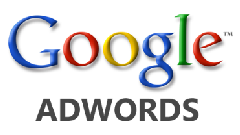Correctly using structured data markup in your articles and blog posts can make your content stand out in Google Search results by including it in enhanced displays like top-stories carousels and rich results with headline text and large images, like this:
Google encourages us to use structured data to help it understand what our pages are about, by providing clues in a structured format that it can easily interpret.
Structured data is coded using in-page JavaScript markup that describes the content of the page.
Google provides the following suggestions/warnings for using structured data markup for SEO purposes:
- Although most structured data for search uses schema.org vocabulary, follow the documentation on developers.google.com as definitive for Google Search behavior, rather than the schema.org documentation.
- Always test your structured data markup using the Structured Data Testing tool before it goes live.
- For your content to be eligible for enhanced display on Google, you must include all the required properties for an object.
- Defining more recommended features can make it more likely that your information can appear in Search results with enhanced display, but it's better to supply fewer but complete and accurate properties vs. more properties that are less complete or accurate.
Although a number of different structured-data markup systems exist, and Google recognizes several of them, the simplest and most-used is JSON-LD (JavaScript Object Notation for Linked Data) - say "Jason LD" - which uses arrays of attribute-value pairs (like "@type NewsArticle").
Google recognizes a number of applications for structured data - AMP and non-AMP pages, articles, videos, recipes, etc. For simplicity, in the following example I'm going to demonstrate the easiest case: how to do structured-data markup for a non-AMP article or blog post.
To begin, I created a simple webpage containing an article, here: https://www.davidhboggs.com/demos/article.htm which looks like this:
Then using the example here https://search.google.com/structured-data/testing-tool I created the following JSON-LD script and pasted it into the <HEAD> of article.htm:
---------------------------------------------------------------------------------
<script type="application/ld+json">
{
"@context": "http://schema.org",
"@type": "NewsArticle",
"mainEntityOfPage": {
"@type": "WebPage",
"@id": "https://www.davidhboggs.com/article.htm"
},
"headline": "Transformation of Search Summit scheduled for 19 October 2018 in NYC",
"image": [
"https://www.davidhboggs.com/images/david_round_150.jpg",
"https://www.davidhboggs.com/images/newsletter.png",
"https://www.davidhboggs.com/images/transformation-of-search.png"
],
"datePublished": "2018-08-08T12:51:51+00:00",
"dateModified": "2018-08-08T12:51:51+00:00",
"author": {
"@type": "Person",
"name": "David Boggs"
},
"publisher": {
"@type": "Organization",
"name": "ACRO Global",
"logo": {
"@type": "ImageObject",
"url": "https://www.acroglobal.com/images/header2017_300.png"
}
},
"description": "Conference organized by ClickZ with Search Engine Watch and Catalyst will be addressing latest trends in search: platforms and technologies, organic and paid."
}
</script>
---------------------------------------------------------------------------
Here's where all that came from, line by line:
"http://schema.org" is used in every script.
The various @types for non-AMP pages are here: developers.google.com/sear...data-types/article#non-amp
"NewsArticle" and "WebPage" were obvious fits for my content.
"@id" is the URL of the page: https://www.davidhboggs.com/article.htm
"headline" comes from the <h1> tag of the page.
Then come the "image" URLs, one for each image on the page: head shot, Newsletter icon, conference icon. Include all your important images.
Next are "datePublished" and 'dateModified" in iso 8601 format, which you can get here: http://www.timestampgenerator.com/
Then come "author" data, with @type=person, name=David Boggs
Followed by "publisher" data: @type=Organization, name=ACRO Global
Then "logo" with the data pair @type: "Image Object" and the URL of the ACRO Global logo
Finally "description" from the <META description> tag of the page
Saved the page, uploaded it to DavidHBoggs.com and ran the Google Structured Data Testing Tool on the page URL from here: https://search.google.com/structured-data/testing-tool
which produced this result:
No errors, no warnings. Great!
But had I messed up, Google would have given me a (more or less) helpful error message.
If this were a "serious" page - not an example - I'd next add it to my XML sitemap, upload that ad run it by Google Search Console for re-indexing.
And go here for more on Maine search engine optimization.

 - David
- David



Comments on How to use structured data markup to enhance appearance in Google search results